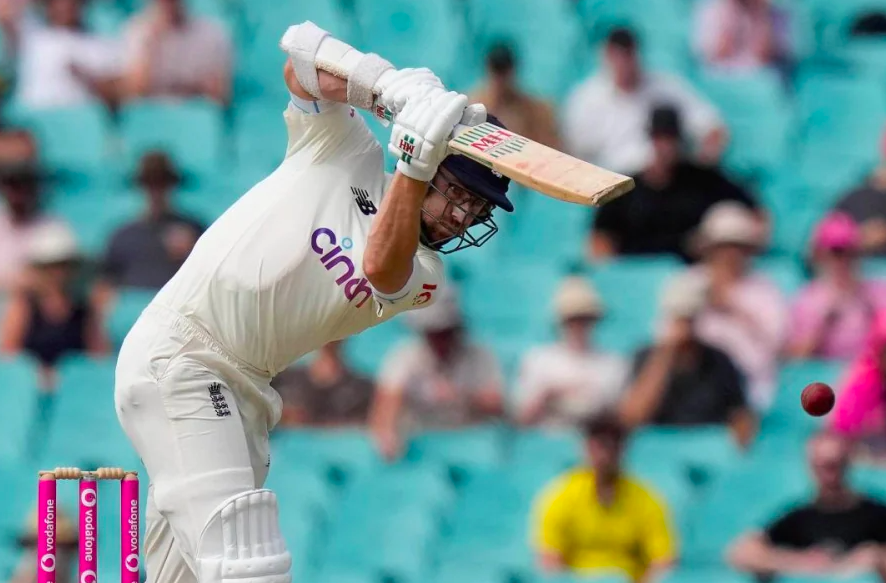England’s tail-enders showed tremendous grit, as they survived the onslaught from the Australian bowlers to save what was undoubtedly a classic Ashes Test match. Earlier on in the day, England looked set to draw the match, following some good knocks from Zak Crawley, Ben Stokes, and first innings hero Jonny Bairstow.
However, a few quick wickets exposed England’s tailenders to a barrage from the Australian pace battery, which they eventually survived to draw the 4th Test at the glorious Sydney Cricket Ground.
Resuming play on the final day at 30/0, Crawley continued his good start from Day 4 but lost two partners in quick succession, with opener Haseeb Hameed and Dawid Malan getting dismissed cheaply. Crawley looked to be in full flow as he struck a series of boundaries, scoring at a blistering pace.
He was joined by captain Joe Root when England were in a tricky position at 74/2, but Crawley himself didn’t last much longer, getting trapped in front of the stumps off youngster Cam Green, returning to the pavilion for a brilliantly made 77, but leaving England in an all-too-familiar situation, at 96/3.
Ben Stokes and Root steadied the ship following the dismissal of Crawley, adding 60 runs for the fourth wicket. Root looked in control throughout his stay but was unable to make a lot of runs, as he probably had a draw in mind. Scott Boland’s golden arm was the undoing of the English skipper, as he played tentatively at a delivery bowled dangerously outside off stump, drawing the edge, and ending Root’s stay in the middle.
At the time of Root’s wicket, it looked exceedingly likely that England would hold fort and draw the Test match. Jonny Bairstow, the hero of the first innings, coming off England’s only century in the Ashes, and a brilliant one at that, joined Stokes in the middle and looked at ease, as he and Stokes brought a sense of calm in the English camp, after some panic caused due to Root’s dismissal.
The relentless Nathan Lyon sprung into action as he caught Stokes in two minds, drawing a needless stroke from the Kiwi-born all-rounder, as he produced a breakthrough completely against the run of play.
Jos Buttler had a forgettable innings, scoring just 11 runs before being scalped by Aussie captain Pat Cummins, leaving England reeling at 218/6. Cummins trapped fast bowler Mark Wood immediately after, turning the game firmly in Australia’s favour.
Spinner Jack Leach was joined by Stuart Broad, who did a brilliant job of playing out the pacers, blocking out every ball, firmly focussed on the draw. Broad used his experience to great effect, taking full advantage of the dwindling light, having frequent chats with his partner, and ensuring that the England batsmen dictated the pace of the game.
With three overs left to play, and two wickets in hand, the light had indeed worsened, meaning that only spin could be bowled within the stipulated time. Australian captain Cummins handed over the ball to his deputy, Steve Smith, who hadn’t picked up a Test wicket in nearly six years. However, it turned out to be an inspired decision as Smith bowled a delivery perfectly into the rough, drawing the outside edge from Leach, making matters extremely interesting for the neutral and nail-biting for the teams involved.
Iconic bowling duo Anderson and Broad were tasked with surviving two overs to save a Test match in what has been a really depressing series for the Englishmen. Broad played the penultimate over from Lyon, leaving Anderson with six balls to play and Australia one wicket away from victory.
Anderson, who holds the record for most unbeaten innings in Test history, extended his lead as he dealt with the wrist spin of Smith, saving the Test match, giving England a much-needed morale boost after a spirited performance in the Test match.
The returning Usman Khawaja grabbed the man of the match award for his twin tons in the Test match, as he joined the elite company. With one Test match left to play at Hobart, England avoided an embarrassing whitewash with this fighting draw.


